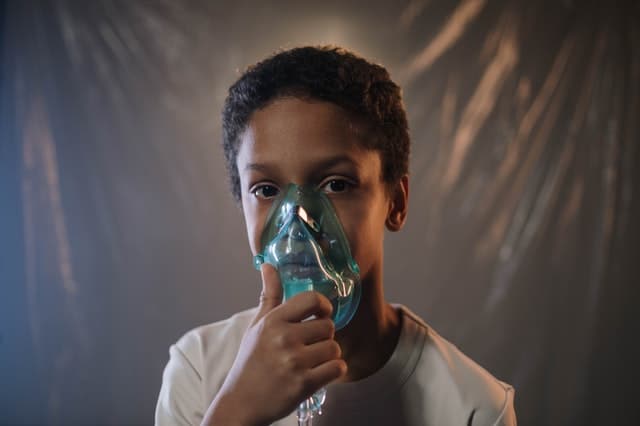What is the basis of fire incident?
When you attempt to the fire incident, Fire spreads very quickly, as a first aider your first priority is to warn any people at risk. If in a building, activate the nearest fire alarm, call 999/112 for emergency help, then leave the building.
However, if doing this delays your escape, make the call when you are out of the building.
As a first aider, try to keep everyone calm. Encourage and assist people to evacuate the area, and give first aid for casualties.
When arriving at an incident involving fire, stop, observe, think, do not enter the area. A minor fire can escalate in minutes to a serious blaze, call 999/911 for emergency help and wait for it to arrive.
THE ELEMENTS OF FIRE INCIDENT
A fire needs three components to start and maintain its ignition (a spark or flame) a source of fuel (petrol, wood, or fabric), and oxygen (air). Removing any of these elements can break this “triangle of fire”
- Remove combustible materials, such as paper or cardboard, from the path of a fire, as they can fuel the flames.
- Cut off a fire’s oxygen supply by shutting a door on fire or smothering the flames with a fire blanket. This will cause the fire to suffocate and go out,
- Switch off a car’s ignition, or pull the fuel cut-off on a large diesel vehicle, normally marked on the outside of the vehicle, or switch off the gas supply.
LEAVING A BURNING BUILDING IN FIRE INCIDENT
If you see or suspect a fire in a building, activate the first fire alarm you see. Try to help people out of the building without putting yourself at risk. Close doors behind you to help prevent the fire from spreading.
If you are in a public building, use the fire exits and look for assembly points outside. You should already know the evacuation procedure at your workplace.
If, however, you are visiting other premises you are not familiar with, follow the signs for escape routes and obey any instructions given by their fire marshals.

EVACUATING OTHER PEOPLE
Encourage people to leave the building calmly but quickly by the nearest exit. If they have to use the stairs, make sure they do not rush and risk falling down.
 CAUTION
CAUTION
When escaping from a tire:
- Don’t re-enter a burning building to collect personal possessions.
- Do not use lifts.
- Do not go back to a building until cleared to do so by a fire officer.
Fire precautions:
- Don’t move anything that is on fire.
- Do not smother flames with flammable materials.
- Do not fight a fire if it puts your own safety at risk.
- If your clothes catch fire and help is not available, extinguish the flames by wrapping yourself up tightly in suitable material and rolling along the ground.
- Do not put water on an electrical fire: pull the plug out or switch the power off at the mains.
- Smother a hot fat fire with a fire blanket, never use water.
CLOTHING ON FIRE
Always follow this procedure: Stop, Drop, and Roll
- Stop the casualty panicking, running around cr going outside; any movement or breeze will fan the flames.
- Drop the casualty to the ground. If possible, wrap him tightly in a fire blanket, or heavy fabric such as a coat, curtain, blanket [not nylon or cellular type), or rug.
- Roll the casualty along the ground until the flames have been smothered. Treat any burns help the casualty to lie down with the burned side uppermost and cool the burn

PUTTING OUT FLAMES
Help the casualty onto the ground to stop flames rising to his face. Wrap him in a fire blanket to starve flames of oxygen, and roll him on the ground until the flames are extinguished.
SMOKE AND FUMES
Any fire in a confined space creates a highly dangerous atmosphere that is low in oxygen and may also be polluted by carbon monoxide and other toxic fumes. Never enter a smoke- or fume-filled building or open a door leading to a tire. Let the emergency services do this.
- If you are trapped in a burning building if possible go into a room at the front of the building with a window and shut the door. Block gaps under the door by placing a rug or similar heavy fabric across the bottom of the door to minimize smoke. Open the window and shout for help.
- Stay low if you have to cross a smoke-filled room air is clearest at floor level.
- If escaping through a high window, climb out backward feet first; lower yourself to the full length of your arms before dropping down.

AVOIDING SMOKE AND FUMES
Shut the door of the room you are in and put a rug or blanket against the door to keep smoke out. Open the Window and shout for help. Keep as low as possible to avoid fumes in the room.
Actions on fire Incidents
How to use fire extinguisher
Anyone who is probably going to possess use fire fighting equipment should be trained in its use and in basic fire-fighting techniques.
It’s also essential that the proper sort of extinguisher is employed for the hearth.
Choosing the incorrect sort of extinguisher can have life-threatening consequences. employing a water extinguisher where electricity is present could end in electrocution.
Some water spray and water mist extinguishers are approved to be used on electrical equipment.
Quality extinguishers are going to be marked on the body of the extinguisher as “Approved to 35 kV dielectric test”. this suggests that they need to be tested to 35,000 Volts at one meter.
Remember this, Water spray and water mist extinguishers don’t conduct electricity through the spray or mist because, unlike a water jet extinguisher, there’s no continuous path.
Also, Carbon Dioxide (CO2) and dry powder extinguishers prevent oxygen from reaching the hearth and extinguish it but they are doing not cool the burning material as water does, so if the powder gets blown away the hearth can reignite.
Foam extinguishers are primarily designed to be used on Class B fires, they’re also effective on Class A fires because they’re predominantly water-based. Foam spray extinguishers often also carry dielectric test approval.
Using an extinguisher

Fire extinguishers shouldn’t be employed by people that haven’t been trained. Before tackling a fireplace place with a fire extinguisher confirm you or somebody else has raised the hearth alarm which you’ve got a secure evacuation route.
Using the right sort of extinguisher for the hearth, use the four-step PASS technique.
- Pull: Pull the pin, this may break the tamper seal.
- Aim: Aim low, pointing the nozzle or hose at the bottom of the hearth. don’t touch the horn on a CO2 extinguisher, it gets very cold and may damage the skin.
- Squeeze: Squeeze the handle to release the extinguishing agent.
- Sweep: Sweep from side to side at the bottom of the hearth, the fuel source, until the hearth is out.
Many people put out small fires quite safely. However, death or serious injury can occur by tackling a fireplace that is beyond your capabilities. Only tackle a fireplace in its very early stages and always make sure you put your own and other people’s safety first.
If you can’t put out the hearth or if the extinguisher becomes empty, evacuate yourself and everybody within the building immediately, closing all doors behind you as you go and make sure the fire brigade has been called.
If there’s the slightest doubt or uncertainty about tackling the hearth evacuate the building immediately and call the hearth brigade.
Genaral Q&A in Fire Incident Mangement
Q. What is the basic response procedure during fire incidents?
A.
- Close the door to the room where the fire is located. This will confine the fire to a smaller area.
- Activate the closest fire alarm system.
- Phone 2111 to report the location of the fire.
- Extinguish or Evacuate.
- Do not re-enter the building.
Q. What are the 5 types of fire?
A.
- Class A – fires involving solid materials such as wood, paper or textiles.
- Class B – fires involving flammable liquids such as petrol, diesel or oils.
- Class C – fires involving gases.
- Class D – fires involving metals.
- Class E – fires involving live electrical apparatus.
Q. What is the most dangerous type of fire?
A. Class C Fires. Class C. Fires caused by flammable gases such as butane and propane make up those in Class C and are arguably the most dangerous given their propensity to explode.
Q. What is ABC in fire extinguishers?
A. ABC Fire Extinguishers use mono ammonium phosphate, a dry chemical with the ability to quickly put out many different types of fires by smothering the flames. This pale, yellow powder can put out all three classes of fire: Class A is for trash, wood, and paper. Class B is for liquids and gases.
Q. Can water make the fire worse?
A. Do NOT pour water on the fire! Since oil and water do not mix, pouring water can cause the oil to splash and spread the fire even worse. In fact, the vaporizing water can also carry grease particles in it, which can also spread the fire.
Hope this will help you rescue other life in the fire incident.
Share, comment, stay with us…

